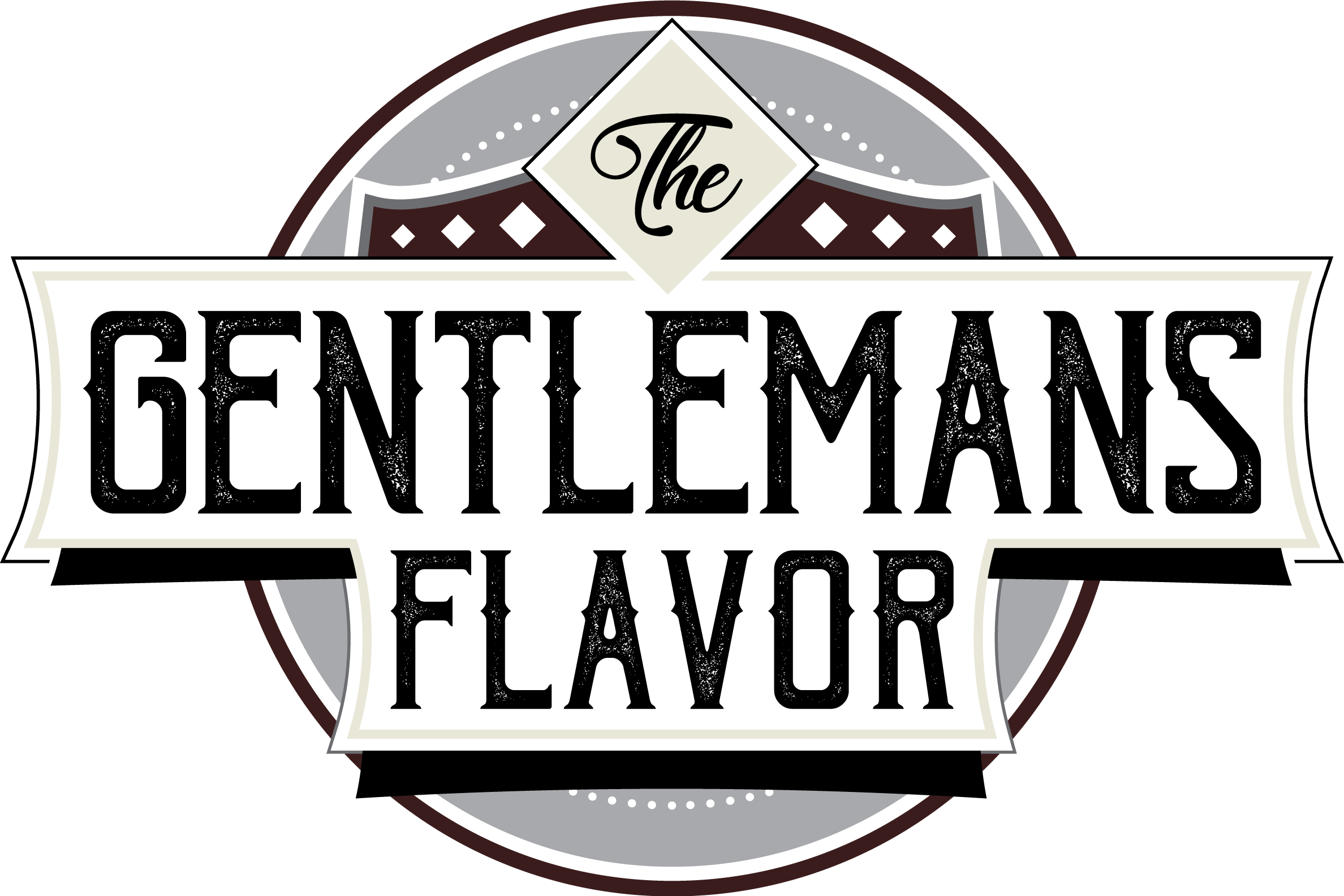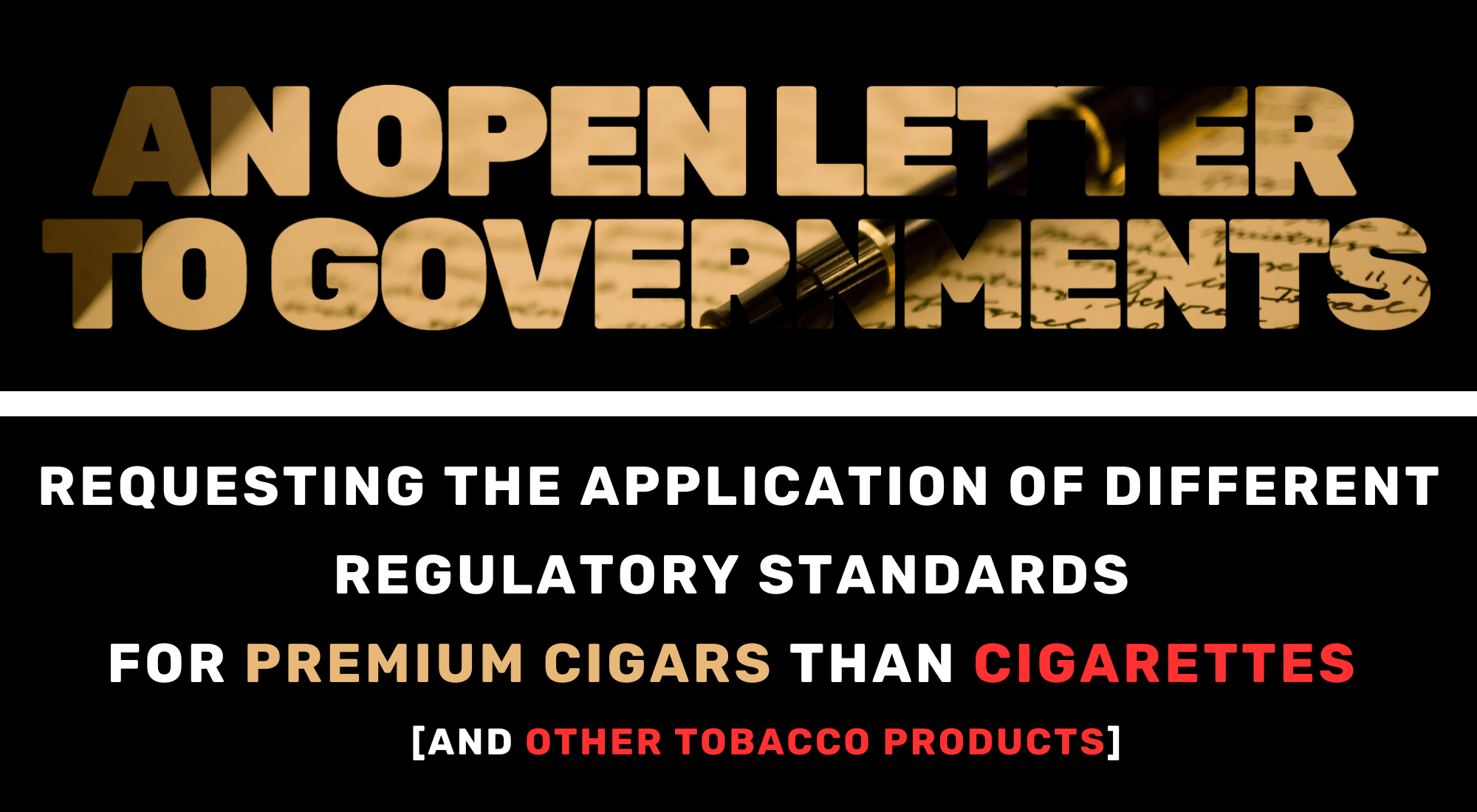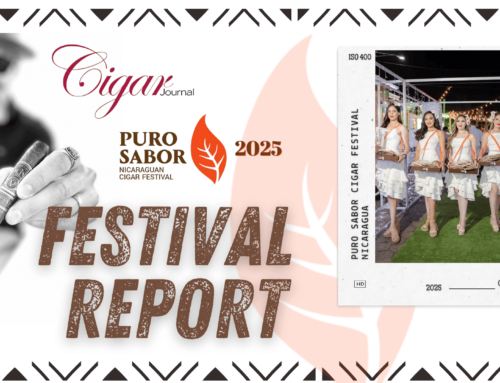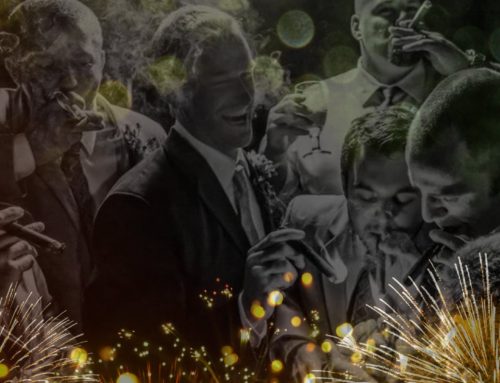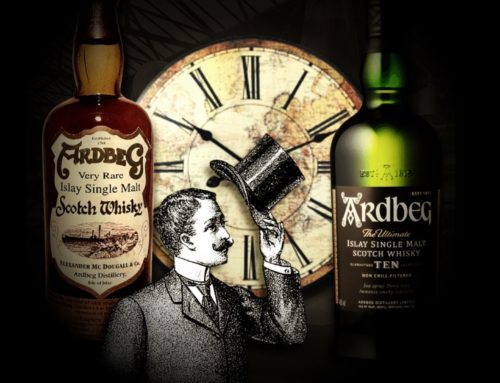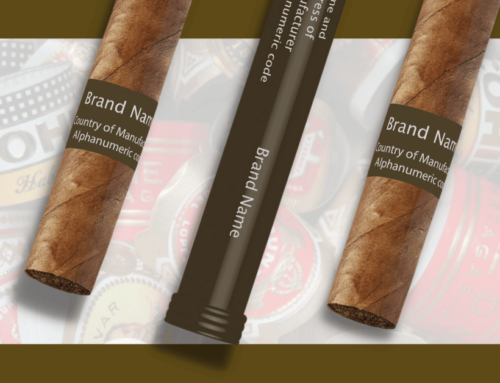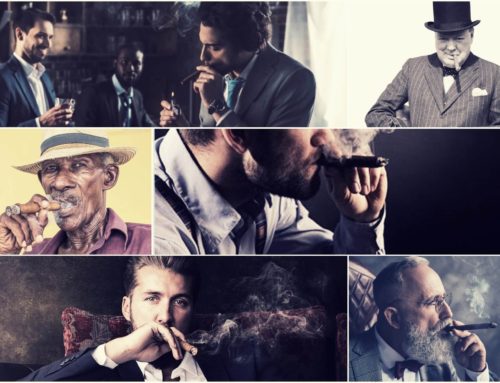To whom it may concern,
In reading this letter, we thank you for your willingness to acheive a deeper understanding of what a premium cigar is truly all about, as well as identifying the key factors that set it apart from cigarettes and other tobacco-related products. It is our belief that these significant differences are not widely understood and warrant careful consideration before applying similar regulatory measures to cigars. Due to these differences, it is our belief that premium cigars, similar to pipe tobacco, should be treated as a ‘specialty tobacco product’ and thus remain exempt from the strict regulatory measures that are applied to cigarettes and other tobacco products.
It is first crucial understand what differentiates a cigar from a cigarette.
Composition and Consumption Paterns
Cigarettes are mass-produced using reconstituted tobacco with various additives, and account for the overwhelming majority of global tobacco consumption. They are inhaled through the lungs when smoked, and are designed for quick, habitual consumption with a fast, high-level nicotine delivery. Conversely, premium cigars are not inhaled through the lungs when smoked, and deliver nicotine at a much slower rate than a cigarette. They are handcrafted exclusively from whole-leaf tobacco, and generally represent less than .25% of global tobacco consumption. Consumption of cigars are typically low-frequency, as they are enjoyed primarily through leisurely or celebratory activity as opposed to the high-frequency, routine consumption that is commonplace with not only cigarettes, but also various other tobacco products.
Demographics
The demographics of cigar smokers and cigarette smokers differs significantly. Cigar smokers, on average, tend to be much older, with most being middle-aged or older adults. With cigarette smoking, young adults and middle-aged individuals are heavily represented, as cigarette smoking often starts at a much younger age. Cigars are typically regarded as being expensive, and generally do not appeal to younger populations in terms of price, appearance, nor taste.
Industrial Process vs Handcrafted Process
Unlike the mass-produced cigarette, the process of creating a premium cigar is both intricate and artisanal, involving multiple meticulous steps from seed to cigar. Knowing the labor-intensive processes that go into creating a cigar, as well as recognizing the cultures that have handcrafted them with pride for generations can foster a proper understanding and potential appreciation of this time-honored and much-revered agricultural artform.
Cultural Significance and Economic Importance
For many cultures, cigar production is a source of inherent cultural and emotional significance, similar to the pride that many in Scotland have for their world-renown whiskies, or many in France have for their world-renown wines or Cognac. For many cigar producing nations, the successful production and exportation of their cigars are not only a source of national identity and pride, but also a key driver for economic stability and growth. Countries such as Nicaragua, Dominican Republic, Honduras, Cuba, and more – some of which can still be regarded as developing nations – are renowned for their high-quality cigars and are greatly dependent on their success within the global market.
Harmful Effects of Strict Government Regulation
Strict government regulation of cigars can have significant and potentially harmful effects on the economies of the numerous countries where premium cigars are produced. To understand the full impact of strict regulation on cigars, it is essential to explore the various facets of the cigar industry and its socio-economic implications:
The cigar industry supports a vast number of jobs across many different sectors, which encompasses tobacco farms, factory workers, as well as various ancillary sectors, which include logistics, marketing, packaging, export management, and much more. For example, in the Dominican Republic alone, the cigar industry employs more than 100,000 people, directly impacting the livelihoods of families and entire communities. The Indigenous Taino people of what is now the Dominican Republic were some of the first cultivators of tobacco, and with such a rich tobacco heritage behind them, tobacco and cigars contribute substantially to not only the Dominican Republic’s GDP, but also the history and the overarching culture as a whole.
The journey from a tobacco seed to a high-quality finished cigar involves a myriad of different roles, all of which can be significantly disrupted through strict government regulation. The cigar industry is a lifeline for many, providing jobs, economic stability and a sense of great pride. Understanding these impacts are crucial when considering regulations.
Unlike the large companies that mass-produce cigarettes, cigars are almost exclusively made by small, family-run operations.
Government Regulation and the Black Market
Government regulations on cigars, particularly those involving packaging requirements and excessively high taxation, can also unintentionally fuel the black market for counterfeit cigar products.
Here is a breakdown of how this happens:
Stringent packaging regulations often mean additional compliance costs for cigar manufacturers and distributors. These include expenses related to redesigning packaging to meet legal standards, incorporating health warnings, and using specific materials. Smaller operations may struggle to absorb these costs and effectively comply, leading to higher prices for retailers and ultimately, end consumers.
What’s more, when a government imposes a high taxation on cigars, the retail price of legitimate products once again rises significantly. For many consumers, especially those with tighter budgets, these higher prices can make purchasing cigars legally less attractive. This creates a demand for cheaper alternatives, which counterfeiters are quick to exploit as they effectively manage to evade taxes and regulatory costs. Once again, this makes the black market a more appealing option for those seeking more affordable products.
This creates a vicious cycle where counterfeiters thrive, legitimate businesses suffer, and consumers are exposed to potentially dangerous products made in unregulated, possibly unsanitary conditions.
Conclusions
In light of these, and other significant differences between cigars and cigarettes, we strongly urge you to consider separate regulatory standards for premium cigars. Such standards should recognize and account for the unique nature of these niche products, their traditional craftsmanship, their differing demographics, and their distinct consumption patterns. Onerous, overly stringent regulations could jeopardize the livelihood and culture of thousands of farmers, artisans and many others who rely on this centuries-old industry, and further fuel an dangerous environment for unregulated black market products.
Cigars should not be collateral victims to the war on cigarettes.
On behalf of responsible, adult cigar enthusiasts everywhere, we thank you for considering our common perspective on this matter. I trust that you will take these points into careful account when reviewing regulations on premium cigars.
Sincerely,
Cigar enthusiasts everywhere
